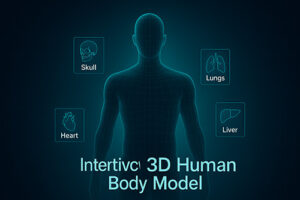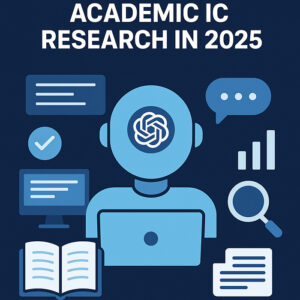Natural Language Processing (NLP): The Bridge Between Human Language and Machine Understanding
Introduction
Natural Language Processing (NLP) stands at the fascinating intersection of linguistics, computer science, and artificial intelligence, enabling machines to understand, interpret, and generate human language. Unlike the rigid syntax of programming languages, human language is inherently ambiguous, context-dependent, and constantly evolving—making it one of the most challenging domains for computational systems to master. Yet the ability to process natural language effectively unlocks tremendous possibilities, from intelligent virtual assistants that respond to spoken commands to systems that can analyze vast collections of text to extract meaningful insights.
This comprehensive guide explores the fundamentals, methodologies, architectures, and applications that define modern NLP. From the statistical foundations that transformed the field in the 1990s to the deep learning revolution of the past decade, we’ll examine how researchers and engineers have progressively enhanced machines’ capacity to work with human language. Whether you’re a researcher, developer, student, or simply curious about how technologies like chatbots and translation tools function, this resource provides a thorough foundation for understanding the remarkable science of teaching machines to understand words.
Table of Contents
- Fundamentals of Natural Language Processing
- The Evolution of NLP
- Text Preprocessing and Normalization
- Language Modeling
- Word Embeddings and Representations
- Part-of-Speech Tagging and Syntactic Parsing
- Named Entity Recognition
- Sentiment Analysis and Opinion Mining
- Machine Translation
- Question Answering Systems
- Dialogue Systems and Conversational AI
- Summarization and Text Generation
- Recurrent Neural Networks in NLP
- Transformer Models and Attention Mechanisms
- Large Language Models
- Multimodal NLP
- Evaluation Metrics and Benchmarks
- Ethical Considerations in NLP
- NLP Tools and Frameworks
- Future Directions
- Conclusion
Fundamentals of Natural Language Processing
Natural Language Processing encompasses a broad range of computational techniques designed to analyze, understand, and generate human language. This interdisciplinary field draws from linguistics, computer science, and cognitive psychology to bridge the gap between human communication and machine understanding.
The Complexity of Human Language
Several characteristics make natural language particularly challenging for computational systems:
Ambiguity: Words and phrases often have multiple potential interpretations. The sentence “I saw her duck” could refer to witnessing someone lower their head or observing a waterfowl that belongs to a person.
Context Dependency: The meaning of language depends heavily on context, including preceding text, speaker knowledge, cultural references, and situational factors.
Non-literal Expressions: Idioms, metaphors, sarcasm, and humor often convey meanings that differ from their literal interpretations.
Compositionality: The meaning of a complex expression depends not just on its components but how they’re combined, requiring systems to understand grammatical structures.
Language Evolution: Human languages constantly evolve with new words, changing meanings, and shifting usage patterns.
Levels of Linguistic Analysis
NLP systems typically address multiple levels of language structure:
Phonology: The study of sound patterns (relevant for speech recognition and synthesis)
Morphology: Analysis of word formation from smaller meaningful units (like prefixes and suffixes)
Syntax: The structural relationships between words in sentences
Semantics: The meaning of words, phrases, and sentences
Pragmatics: How context contributes to meaning
Discourse: How meaning is constructed across multiple sentences or utterances
Core NLP Tasks
Several fundamental tasks form the building blocks of more complex NLP applications:
Tokenization: Splitting text into words, phrases, or other meaningful elements
Part-of-Speech Tagging: Identifying whether words function as nouns, verbs, adjectives, etc.
Syntactic Parsing: Analyzing the grammatical structure of sentences
Named Entity Recognition: Identifying and classifying proper nouns into categories like person, organization, location
Coreference Resolution: Determining when different words refer to the same entity
Semantic Role Labeling: Identifying the semantic relationships between predicates and their arguments (who did what to whom)
The Interdisciplinary Nature of NLP
Effective NLP draws from multiple disciplines:
Linguistics: Provides theoretical frameworks for understanding language structure and use
Computer Science: Offers algorithms, data structures, and computational techniques
Statistics and Machine Learning: Enables systems to learn patterns from data rather than following explicit rules
Psychology and Cognitive Science: Informs models of how humans process and understand language
Domain Expertise: Applications often require specialized knowledge (medical terminology for healthcare NLP, legal concepts for legal document analysis)
As we’ve discussed in our Introduction to Computational Linguistics article, this multifaceted nature makes NLP both challenging and richly rewarding as a field of study.
For foundational concepts in linguistics relevant to NLP, visit the Linguistic Society of America, which provides educational resources for understanding language structures.
The Evolution of NLP
Natural Language Processing has undergone several paradigm shifts since its inception, with each era bringing new approaches, capabilities, and applications. This evolution reflects both advances in computing technology and deepening insights into the nature of language.
Early Rule-Based Approaches (1950s-1970s)
The earliest NLP systems relied primarily on hand-crafted rules and linguistic knowledge:
Machine Translation: The Georgetown-IBM experiment (1954) translated Russian sentences into English using six grammar rules and 250 vocabulary items, sparking early optimism.
ELIZA (1966): Joseph Weizenbaum’s program simulated conversation by pattern matching and substitution, creating the illusion of understanding.
SHRDLU (1972): Terry Winograd’s system could understand natural language commands about a simplified blocks world, demonstrating integration of language understanding with a specific domain.
These early systems showed promise in constrained environments but struggled with the complexity and ambiguity of unrestricted language. Their limited scalability led to a period of reduced funding and interest sometimes called the “AI winter.”
Statistical Revolution (1980s-2000s)
A fundamental shift occurred as researchers moved from rule-based to statistical approaches:
Statistical Machine Translation: Systems like IBM Models (1990s) learned translation patterns from parallel corpora, enabling more robust translation without exhaustive rule engineering.
Hidden Markov Models: Applied to part-of-speech tagging and other sequential labeling tasks, achieving higher accuracy than rule-based approaches.
Statistical Parsing: Parsers learned grammatical patterns from treebanks (collections of syntactically annotated sentences).
Maximum Entropy Models and Conditional Random Fields: Provided frameworks for incorporating diverse features while learning from data.
This era was characterized by:
- Learning from annotated data rather than encoding explicit rules
- Probabilistic reasoning to handle ambiguity
- Feature engineering to identify relevant linguistic patterns
- Evaluation against standardized datasets and metrics
Machine Learning and Feature Engineering (2000s-early 2010s)
The field continued to advance with more sophisticated machine learning techniques:
Support Vector Machines: Applied to text classification, sentiment analysis, and other NLP tasks.
Topic Models: Latent Dirichlet Allocation (LDA) and related approaches discovered thematic structure in document collections.
Feature Engineering: Researchers developed increasingly sophisticated features capturing lexical, syntactic, semantic, and discourse information.
Structured Prediction: Models like Conditional Random Fields and structured SVMs captured dependencies between outputs (e.g., words in a sequence or nodes in a parse tree).
This period saw the development of many integrated NLP toolkits like NLTK, Stanford CoreNLP, and spaCy, making advanced NLP techniques more accessible to developers.
Deep Learning Revolution (2010s-Present)
Neural networks, particularly deep learning architectures, transformed NLP:
Word Embeddings: Word2Vec (2013) and GloVe (2014) learned vector representations capturing semantic relationships between words, enabling more effective use of distributional information.
Recurrent Neural Networks: LSTMs and GRUs modeled sequential dependencies in language, improving performance on tasks from language modeling to machine translation.
Convolutional Neural Networks: Applied to text classification, sentiment analysis, and other tasks involving local pattern detection.
Attention Mechanisms: Enabled models to focus on relevant parts of the input, significantly improving performance on tasks requiring alignment between sequences.
Transformer Architecture: Introduced in “Attention is All You Need” (2017), transformers parallelized sequence processing while modeling long-range dependencies, leading to significant performance improvements.
Transfer Learning: Pre-trained language models like BERT, GPT, and their successors learn general language representations from vast amounts of text, then fine-tune for specific tasks.
Large Language Models (LLMs): Scaling up model size and training data has led to systems with remarkable capabilities across diverse tasks without task-specific training.
As we’ve explained in our NLP Technology Timeline blog post, each paradigm shift built upon previous advances while introducing fundamentally new approaches to language understanding.
For historical perspectives on NLP’s development, explore the Association for Computational Linguistics (ACL) Anthology, which archives research papers spanning decades of NLP research.
Text Preprocessing and Normalization
Before applying sophisticated NLP algorithms, raw text typically undergoes preprocessing and normalization to create a more standardized representation. These seemingly mundane steps significantly impact downstream performance and represent crucial engineering decisions in NLP pipelines.
Tokenization
Tokenization divides text into meaningful units (tokens), typically words or subwords:
Word Tokenization: Splits text into words, usually at whitespace and punctuation boundaries.
- Challenge: Handling contractions (don’t → do n’t), possessives (John’s → John ‘s), and compound words.
- Language-specific considerations: Languages like Chinese and Japanese don’t use whitespace between words, requiring different approaches.
Sentence Tokenization: Identifies sentence boundaries.
- Challenge: Disambiguating punctuation marks that may or may not indicate sentence boundaries (e.g., periods in abbreviations vs. end-of-sentence periods).
Subword Tokenization: Breaks words into smaller units, balancing vocabulary size and coverage.
- Byte-Pair Encoding (BPE): Iteratively merges frequent character pairs to form subword units.
- WordPiece: Similar to BPE but uses likelihood of units within the training corpus.
- Unigram Language Model: Selects subword vocabulary to maximize corpus likelihood.
- Advantage: Handles out-of-vocabulary words by decomposing them into known subwords.
Text Normalization
Normalization reduces text variability to help models generalize:
Case Folding: Converting text to lowercase to reduce vocabulary size.
- Trade-off: May lose information (e.g., “US” vs. “us”) but often improves statistical efficiency.
Stemming: Reducing words to their word stem.
- Example: “running,” “runner,” and “runs” → “run”
- Algorithms like Porter stemmer apply rule-based transformations.
- Often aggressive and can produce non-words.
Lemmatization: Reducing words to their dictionary form (lemma).
- Example: “better” → “good”, “were” → “be”
- Requires part-of-speech information and morphological analysis.
- More linguistically accurate than stemming but computationally intensive.
Spelling Correction: Identifying and fixing misspellings.
- Approaches range from dictionary-based to contextual neural models.
- Important for user-generated content and speech recognition output.
Noise Removal
Cleaning irrelevant or unhelpful content:
Stopword Removal: Filtering out common words (e.g., “the,” “is,” “and”) that occur frequently but carry little semantic information.
- Note: Modern neural models often retain stopwords as they can contribute to syntax understanding.
Punctuation and Special Character Handling: Removing or standardizing punctuation and special characters.
- Trade-off: Punctuation carries syntactic information but increases vocabulary size.
HTML/XML Cleaning: Removing markup tags from web content.
Text Standardization
Ensuring consistency across text:
Unicode Normalization: Converting equivalent Unicode representations to a standard form.
- Particularly important for languages with diacritics and multilingual applications.
Number and Date Normalization: Converting various formats to a standard representation.
- Example: “January 1st, 2023,” “1/1/23,” “01-01-2023” → consistent format
Handling Contractions and Abbreviations: Expanding or standardizing contractions and abbreviations.
- Example: “don’t” → “do not”; “Dr.” → “Doctor”
Language-Specific Considerations
Different languages require specialized preprocessing:
Compound Word Splitting: In languages like German, long compound words may be split into components.
- Example: “Bundesfinanzministerium” → “Bundes + finanz + ministerium”
Diacritics: Handling characters with accent marks in languages like French, Spanish, and Portuguese.
Word Segmentation: For languages without explicit word boundaries like Chinese, Japanese, and Thai.
Morphologically Rich Languages: Languages like Finnish, Turkish, and Hungarian have complex word formation rules requiring specialized tokenization and normalization.
Modern Trends in Preprocessing
Recent developments affect preprocessing decisions:
Character-Level Models: Some neural approaches bypass word tokenization entirely, operating directly on characters.
End-to-End Learning: Modern neural models can sometimes learn to handle preprocessing tasks implicitly during training.
Contextualized Embeddings: Models like BERT handle subword tokenization internally but still require basic text cleaning.
Preservation of Structure: Increasing recognition that punctuation, capitalization, and formatting provide valuable information, leading to less aggressive normalization.
For practical implementations of text preprocessing techniques, explore resources like NLTK’s preprocessing tools or spaCy’s processing pipeline.
Language Modeling
Language modeling—the task of predicting the probability of sequences of words—forms a cornerstone of modern NLP. Beyond being valuable in its own right for applications like predictive text, language modeling serves as a fundamental pre-training objective that helps systems develop general linguistic knowledge.
Fundamentals of Language Modeling
At its core, language modeling involves estimating the probability distribution over sequences of words:
Joint Probability Decomposition: The probability of a sequence can be decomposed using the chain rule of probability: P(w₁, w₂, …, wₙ) = P(w₁) × P(w₂|w₁) × P(w₃|w₁,w₂) × … × P(wₙ|w₁,…,wₙ₋₁)
Conditional Probability Estimation: Language models estimate the probability of each word given its context (preceding words).
Perplexity: The standard evaluation metric for language models, calculated as the exponential of the average negative log-likelihood: Perplexity = exp(−(1/N)∑log P(wᵢ|w₁,…,wᵢ₋₁)) Lower perplexity indicates better prediction of the test data.
N-gram Language Models
Traditional statistical language models relied on n-gram counts:
N-gram Approach: Approximate the probability of a word given only the previous n-1 words (Markov assumption): P(wₙ|w₁,…,wₙ₋₁) ≈ P(wₙ|wₙ₋ₙ₊₁,…,wₙ₋₁)
Maximum Likelihood Estimation: Estimate probabilities from counts in training data: P(wₙ|wₙ₋ₙ₊₁,…,wₙ₋₁) = count(wₙ₋ₙ₊₁,…,wₙ)/count(wₙ₋ₙ₊₁,…,wₙ₋₁)
Smoothing Techniques: Address the sparsity problem (n-grams not seen in training):
- Laplace (Add-1) Smoothing: Add one to all counts
- Good-Turing Smoothing: Reallocate probability mass based on frequency of frequencies
- Kneser-Ney Smoothing: Sophisticated approach incorporating absolute discounting and lower-order distribution
Back-off and Interpolation: Combine higher-order and lower-order n-gram models:
- Back-off: Use lower-order model when higher-order context not seen
- Interpolation: Weight predictions from models of different orders
Limitations:
- Fixed context window unable to capture long-range dependencies
- Sparsity increases exponentially with n
- Storage requirements for large n
Neural Language Models
Neural approaches revolutionized language modeling by addressing many limitations of n-gram models:
Feed-Forward Neural LM (Bengio et al., 2003):
- Represented words as continuous vectors (embeddings)
- Learned distributed representations capturing semantic similarities
- Still limited to fixed context window
Recurrent Neural LM (Mikolov et al., 2010):
- Used recurrent connections to maintain state across arbitrary sequence lengths
- Theoretically capable of capturing long-range dependencies
- Faced vanishing gradient problems with very long sequences
LSTM and GRU Language Models:
- Specialized architectures addressing the vanishing gradient problem
- Explicit mechanisms for remembering or forgetting information
- Substantially improved modeling of long-range dependencies
Transformer-Based Language Models:
- Self-attention mechanisms connect any positions in the sequence directly
- Parallel processing enables efficient training on longer contexts
- Models like GPT, BERT, and descendants achieve state-of-the-art performance
Types of Language Models
Modern language models differ in how they model context:
Unidirectional (Autoregressive) Models:
- Predict each token based only on preceding tokens (left-to-right)
- Examples: GPT series, traditional LMs
- Suitable for text generation tasks
Bidirectional Models:
- Consider context from both directions when predicting
- Examples: BERT, RoBERTa
- Excelling at representations for classification, understanding
- Use masked language modeling (predict masked tokens)
Prefix Language Models:
- Generative models that can consider some bidirectional context
- Examples: UniLM, T5
- Balance generation capabilities with bidirectional understanding
Applications of Language Models
Language models serve numerous purposes:
Direct Applications:
- Text completion and suggestion
- Spelling and grammar correction
- Speech recognition (rescoring hypotheses)
- Machine translation (evaluating fluency)
- Text generation
Pre-training for Transfer Learning:
- Building general language understanding
- Fine-tuning for downstream tasks
- Few-shot and zero-shot learning
Evaluating Language Understanding:
- Psycholinguistic studies (predicting human reading times)
- Assessing coherence and fluency
For state-of-the-art language modeling resources and benchmarks, visit the Language Model Zoo, which provides standardized interfaces to various language models.
Word Embeddings and Representations
Word embeddings—dense vector representations of words—have become fundamental building blocks in modern NLP systems. These representations capture semantic and syntactic properties of words, enabling algorithms to leverage the distributional patterns of language.
The Distributional Hypothesis
The theoretical foundation for word embeddings comes from linguistics:
Distributional Hypothesis: Words that occur in similar contexts tend to have similar meanings.
- Attributed to linguists J.R. Firth (“You shall know a word by the company it keeps”) and Zellig Harris
- Provides basis for learning word meanings from their distributions in large corpora
Representing Meaning: By examining patterns of co-occurrence, we can represent words as points in a high-dimensional space where semantically similar words cluster together.
Traditional Vector Space Models
Early approaches created sparse, high-dimensional vectors:
One-Hot Encoding: Represent each word as a vector with a single 1 and all other entries 0.
- Simple but fails to capture any semantic relationships
- Dimensionality equals vocabulary size (typically tens of thousands or more)
Count-Based Methods: Count co-occurrences between words and contexts.
- Term-Document Matrix: Words represented by their counts across documents
- Term-Term Matrix: Words represented by their co-occurrence with other words
- Pointwise Mutual Information (PMI): Measures statistical association between word pairs, adjusting for their individual frequencies
Dimensionality Reduction: Apply matrix factorization techniques to dense representations.
- Latent Semantic Analysis (LSA): Apply Singular Value Decomposition to term-document matrices
- Non-negative Matrix Factorization: Constrain factors to be non-negative for interpretability
- Reduces sparsity and reveals latent semantic dimensions
Neural Word Embeddings
Neural approaches dramatically improved word representations:
Word2Vec (Mikolov et al., 2013):
- Skip-gram: Predict context words given a target word
- Continuous Bag of Words (CBOW): Predict target word given context words
- Uses shallow neural network with single hidden layer
- Trained on massive corpora to learn 50-300 dimensional vectors
- Captured remarkable semantic relationships (e.g., king – man + woman ≈ queen)
GloVe (Global Vectors, Pennington et al., 2014):
- Combined count-based and prediction-based approaches
- Directly optimizes vectors to predict global co-occurrence statistics
- Performs well on analogy tasks and semantic similarity benchmarks
FastText (Bojanowski et al., 2017):
- Extends Word2Vec to handle subword information
- Represents words as bags of character n-grams
- Better handles morphologically rich languages and out-of-vocabulary words
Properties of Word Embeddings
Well-trained embeddings exhibit several useful properties:
Semantic Clustering: Words with similar meanings have vectors close in cosine similarity.
Linear Substructures: Semantic relationships manifest as consistent vector offsets.
- Gender pairs (man/woman, king/queen) have similar vector differences
- Verb tense relationships show consistent directionality
- Comparative/superlative forms demonstrate systematic patterns
Compositionality: Word vectors can be combined to represent phrases and sentences.
- Simple averaging works surprisingly well for short phrases
- More sophisticated composition functions can capture nuanced meanings
Contextualized Word Representations
Static word embeddings assign the same vector regardless of context, limiting their ability to handle polysemy (words with multiple meanings). Modern approaches address this limitation:
ELMo (Embeddings from Language Models, Peters et al., 2018):
- Uses bidirectional LSTM language model
- Generates dynamic word representations based on entire sentence
- Different vector for each context of a word
BERT (Bidirectional Encoder Representations from Transformers, Devlin et al., 2019):
- Pre-trained using masked language modeling and next sentence prediction
- Deeply bidirectional, considering left and right context simultaneously
- Produces context-sensitive representations for each token
GPT (Generative Pre-trained Transformer) Series:
- Unidirectional but with increasing capacity and training data
- Generates increasingly nuanced representations capturing subtle contextual variations
Evaluation of Word Embeddings
Several benchmarks assess embedding quality:
Word Similarity Tasks:
- WordSim-353, SimLex-999, MEN dataset
- Measure correlation between embedding similarities and human judgments
Word Analogy Tasks:
- Testing relationships like “man is to woman as king is to ___”
- Semantic and syntactic analogies in datasets like Google’s analogy dataset
Downstream Task Performance:
- Ultimately evaluated by performance on tasks like classification, named entity recognition, parsing
Specialized Embeddings
Domain-specific applications often benefit from specialized embeddings:
Domain-Adapted Embeddings: Trained or fine-tuned on domain-specific corpora (e.g., biomedical, legal texts).
Multilingual Embeddings: Aligned across languages to enable cross-lingual applications.
Retrofitting: Incorporating knowledge from lexical resources like WordNet into distributional embeddings.
Debiased Embeddings: Modified to reduce unwanted social biases reflected in training data.
For hands-on exploration of word embeddings, visit the Embedding Projector, which provides interactive visualization of embedding spaces.
Part-of-Speech Tagging and Syntactic Parsing
Understanding the grammatical structure of language represents a fundamental challenge in NLP. Part-of-speech tagging and syntactic parsing provide the foundation for analyzing how words relate to each other in sentences, enabling higher-level semantic understanding.
Part-of-Speech Tagging
Part-of-speech (POS) tagging assigns grammatical categories to words in context:
Tag Sets:
- Penn Treebank: Common English tagset with 45 tags (NN for noun, VB for verb base form, etc.)
- Universal Dependencies: Cross-linguistic tagset for consistent annotation across languages
Ambiguity Challenges:
- Many words can function as multiple parts of speech depending on context
- Example: “Book” can be a noun (“I read a book”) or verb (“Book a flight”)
- Requires considering context to resolve ambiguities
Approaches to POS Tagging:
Rule-Based Systems:
- Hand-crafted disambiguation rules
- Example: ENGTWOL, Constraint Grammar
- High precision but limited coverage
Statistical Methods:
- Hidden Markov Models (HMMs): Model tag sequences as Markov processes
- Maximum Entropy Markov Models (MEMMs): Incorporate rich feature sets
- Conditional Random Fields (CRFs): Account for dependencies between tags in sequence
Neural Approaches:
- Bidirectional LSTM: Capture context from both directions
- CNN+BiLSTM: Extract character and word-level features
- Fine-tuned pre-trained models: BERT and similar models achieve state-of-the-art performance
Evaluation: Measured by accuracy (percentage of correctly tagged words), typically exceeding 97% for English.
Syntactic Parsing
Syntactic parsing analyzes sentence structure, revealing relationships between words:
Constituency Parsing:
- Divides sentences into nested constituents (phrases)
- Based on phrase structure grammars
- Creates tree structures with non-terminal nodes representing phrases (NP, VP, PP)
- Example: The sentence “The cat sat on the mat” might parse as [S [NP The cat] [VP sat [PP on [NP the mat]]]]
Dependency Parsing:
- Identifies direct relationships between words
- Each word (except the root) has exactly one head
- Creates graph structures showing grammatical relations
- More straightforward for capturing relationships in free word order languages
- Example: In “The cat sat on the mat,” “sat” is the root, “cat” is the subject of “sat,” and “mat” is the object of preposition “on”
Parsing Approaches
Various algorithms tackle the parsing challenge:
Grammar-Based Approaches:
- Context-Free Grammars (CFGs): Formal grammar defining legal phrase structures
- Probabilistic CFGs: Assign probabilities to production rules, enabling disambiguation
- Chart Parsing Algorithms: CYK algorithm, Earley algorithm for efficiently exploring possible parses
Transition-Based Parsing:
- Constructs parse incrementally through sequence of actions (shift, reduce, etc.)
- Uses classifier to determine next action based on current state
- Greedy or beam search strategies
- Linear time complexity, suitable for real-time applications
Graph-Based Parsing:
- Scores possible dependency arcs
- Finds maximum spanning tree in complete graph
- Global optimization considering all possible dependencies simultaneously
- More computationally intensive but potentially more accurate
Neural Parsing:
- Recursive Neural Networks: Particularly suited for constituency parsing
- BiLSTM with Attention: Captures long-range dependencies
- Graph-Based Neural Networks: Learn complex scoring functions for dependencies
- Transformer-Based Models: State-of-the-art performance using pre-trained representations
Applications of Syntactic Analysis
Syntactic information serves numerous downstream tasks:
Information Extraction: Identifying subject-predicate-object triplets for knowledge base construction
Semantic Role Labeling: Determining “who did what to whom” using syntactic structure as scaffolding
Machine Translation: Guiding reordering decisions between languages with different structures
Question Answering: Matching syntactic patterns between questions and potential answers
Sentiment Analysis: Determining scope of negation and attribution of sentiment to targets
Text Summarization: Identifying central predicates and their arguments for content selection
Challenges in Syntactic Parsing
Several factors complicate syntactic analysis:
Ambiguity: Sentences often have multiple valid parses (e.g., “I saw the man with the telescope”)
Long-Distance Dependencies: Relationships between words separated by many intervening words
Domain Adaptation: Parsers trained on formal text often perform poorly on social media, technical documents, or other specialized domains
Cross-Lingual Parsing: Developing parsers for low-resource languages with limited labeled data
For practical tools and resources for syntactic analysis, explore Stanford CoreNLP or the Universal Dependencies project, which provides consistent syntactic annotations across multiple languages.
Named Entity Recognition
Named Entity Recognition (NER) identifies and classifies named entities in text into predefined categories such as person names, organizations, locations, time expressions, quantities, and more. This seemingly straightforward task forms a critical component in numerous NLP applications, from search engines to question answering systems.
Core Concepts in NER
Named Entity Recognition involves several key elements:
Entity Detection: Identifying spans of text that constitute named entities.
Entity Classification: Assigning the correct type label to each identified entity.
Common Entity Types:
- Person (PER): Individual names (e.g., “Barack Obama,” “Marie Curie”)
- Organization (ORG): Companies, agencies, institutions (e.g., “Apple Inc.,” “United Nations”)
- Location (LOC): Geographical locations (e.g., “Paris,” “Mount Everest”)
- Date/Time expressions (DATE): Temporal references (e.g., “January 1st,” “next Monday”)
- Monetary values (MONEY): Currency amounts (e.g., “$5 million,” “€300”)
- Percentage (PERCENT): (e.g., “25%,” “one-third”)
Extended Entity Types in Specialized Systems:
- Biomedical: Genes, proteins, diseases, medications
- Legal: Laws, court cases, legal provisions
- Finance: Financial instruments, economic indicators
- Technical: Software, hardware, algorithms
Challenges in NER
Several factors make NER non-trivial:
Ambiguity: The same phrase may or may not be an entity depending on context.
- Example: “May” could be a month, a person’s name, or a modal verb
Entity Boundaries: Determining where entities begin and end.
- Example: Is “Bank of America Building” one entity or two?
Nested Entities: Entities containing other entities.
- Example: “University of California, Berkeley” (organization containing location)
Novel Entities: Previously unseen entities not appearing in training data.
Case Sensitivity: Capitalization provides important clues but is unreliable in some contexts (e.g., sentence beginnings, all-caps text).
Domain Specificity: Entity types and characteristics vary significantly across domains.
Approaches to NER
NER systems have evolved from rule-based to sophisticated neural approaches:
Rule-Based Systems:
- Dictionaries/gazetteers of known entities
- Pattern matching using regular expressions
- Grammatical rules for entity identification
- Advantages: Interpretable, no training data required
- Disadvantages: Limited coverage, labor-intensive to create and maintain
Statistical Approaches:
- Hidden Markov Models (HMMs): Model sequence of word-tag pairs
- Maximum Entropy Markov Models (MEMMs): Incorporate rich feature sets
- Conditional Random Fields (CRFs): State-of-the-art before neural methods
- Features typically include word identity, capitalization, part-of-speech, gazetteers, etc.
Neural Approaches:
- BiLSTM-CRF: Bidirectional LSTM for context representation with CRF layer for optimal tag sequence
- CNN-BiLSTM: Convolutional layers for character-level features
- Attention Mechanisms: Focus on relevant parts of context for classification
- Fine-tuned Pre-trained Models: BERT, RoBERTa, etc. with token classification heads
- Span-Based NER: Identify candidate spans first, then classify them
Tagging Schemes
Several conventions represent entity annotations:
IOB (Inside-Outside-Beginning):
- B-TYPE: Beginning of entity of type TYPE
- I-TYPE: Inside (continuation) of entity of type TYPE
- O: Outside any entity
- Example: “Barack/B-PER Obama/I-PER was/O born/O in/O Hawaii/B-LOC”
BIOES (Beginning-Inside-Outside-End-Single):
- Adds E-TYPE for end of entity and S-TYPE for single-token entities
- More expressive, potentially improving model performance
Evaluation Metrics
NER systems are evaluated through several metrics:
Entity-Level Metrics









